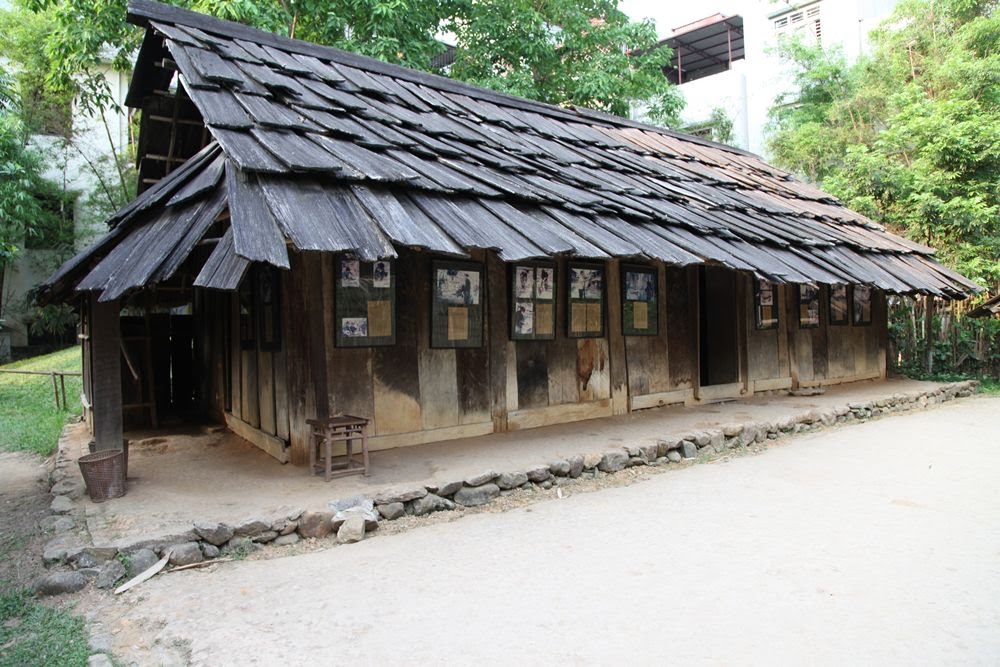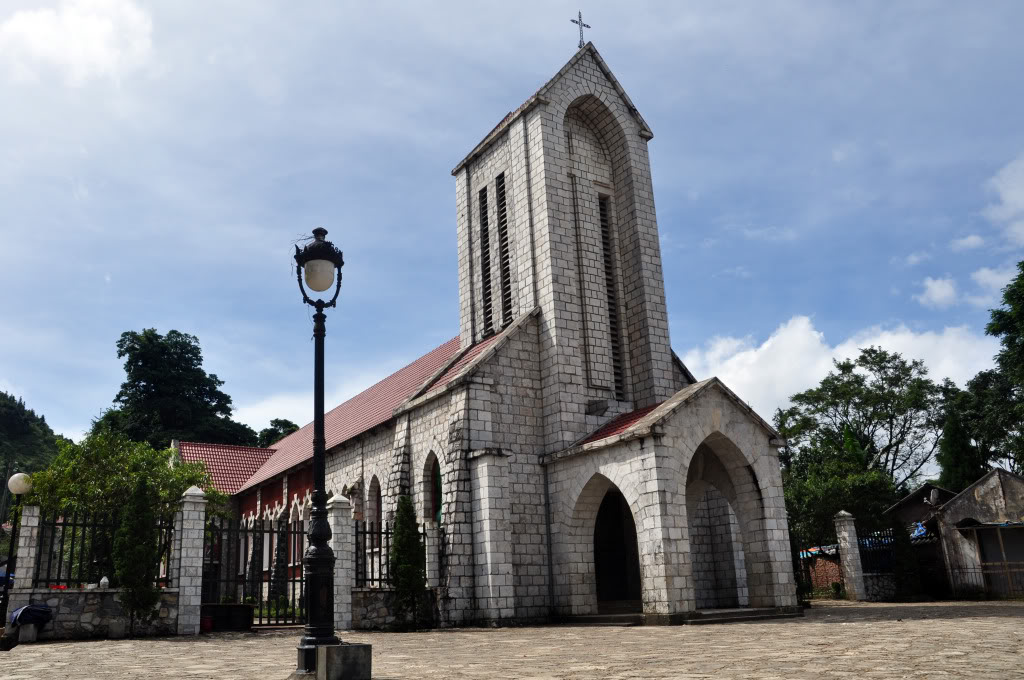Sapa is not only a wonderful destination of culture, cuisine, and tourism attractions but also a land famous for unique architectural buildings. The architecture of Sapa in particular and Lao Cai in general may be divided into two main styles. One is traditional style of local ethnic groups, the other is the Western style with French architectural buildings.
The traditional style of Sapa’s is expressed most clearly through houses of local ethnic groups especially those of Tay, Nung and H’mong people. Each type of house is designed differently from another but in general, all ethnic houses in Sapa are made of wood. Stilt house of Tay people is made of iron wood of which roof is thatched by forest leaves to resist the summer heat. Stilt house generally has great area and is divided into many rooms. Traditionally, the center room is placed with an altar to worship ancestors. The space under the house is used for not only keeping tool such as shovel, plow and harrow but also confining cattle. The artistic decoration of Tay’s house is very unique. There are three stoves in a typical house. One is placed in the center room for guests, another is put near the bed of the elderly and the last one is placed in the kitchen for cooking. Tay people build only one door at the top of the staircase. In Tay people’s belief, the stair must have 9 footsteps which symbolize 9 souls of the woman.

Visitors taking a Sapa tour may easily caught ground house of H’mong people in Cat Cat, Lao Chai and Ta Van villages. The house is built with one of the most precious wood: Fokienia Hodgirni, the same kind of wood they use for burying. A traditional H’mong house has 3 rooms, 2 doors and 2 windows at least. Among 3 rooms, the left one is the bedroom of spouse, the right is room for guests with a stove. Like Tay people, ancestors play an essential role in Hmong’s belief so the altar is solemnly placed in the center room. Besides altar, H’mong people also consider two pillars as the most important part in the architecture of their house. It symbolizes the righteousness, stability and strength of the host. When taking a Sapa Tour especially a homestay tour, visitors will have the opportunity to take a firsthand look at the architectural art of ethnic minorities in Sapa.

Besides houses of ethnic groups which were built in traditional style, French-style buildings also contribute to the unique architecture of Sapa. Over years, those buildings have been damaged more or less but they still keep their timeless beauty. One typical work of this architectural style is the Catholic Church (or Stone Church). The Catholic Church is located in the center of Sapa town, with Ham Rong Mountain behind and several historical vestiges surrounding. The Church was built in the shape of the cross in Gotic Roman architecture. That style is expressed through roof, bell tower and arches which have the shape of serene pyramidal. The whole church was built of hewn stones; therefore it is also called “the Stone Church”. The wall on the right of the cross is designed like stalactites melting down to create the natural fell for visitors. The Catholic Church in Sapa is a famous attraction of tourists. Although having experienced some restorations due to war and times, the Church still remain the charm and spirit of a religious architectural works.
See more: Sapa Trekking Tours | Sapa Adventure Tours

